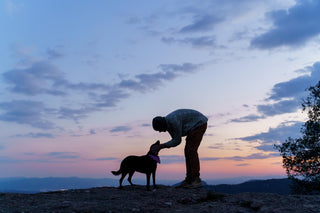How real creators—from therapists to course builders to B2B founders—got those first precious buyers (without a big list, a funnel, or a clue what they were doing at first).
_______________________________
Before the five-figure launches.
Before the evergreen funnels.
Before the slick checkout pages and curated Instagram grids…
There were the first 100 sales.
And guess what?
They weren’t perfect. They weren’t passive. They weren’t “scaled.”
They were human. Scrappy. Sometimes random. Often personal.
And absolutely foundational to everything that came next.
In this post, we’re pulling from the World of Shortcuts community—real entrepreneurs who shared how they got their digital product businesses off the ground. We dug into transcripts, stories, and private interview notes (yes, even spreadsheets 👀) to find the real shortcuts behind those first sales.
Here’s what we learned.

1. Sell Before You Scale (and Don’t Wait to Be Ready)
We’re told to “build the product” and then launch. But some of the most successful creators in our orbit did the exact opposite: they sold before anything existed—and let sales lead the way.
Take Laura Khalil, a consultant who helps service providers land high-paying corporate clients. Her first digital offer wasn’t a full-blown course—it was a $47 live workshop.
She taught real strategies, gave people tangible wins, and followed up personally with attendees. Many of those workshop buyers became $10K mastermind clients.
“I don’t gatekeep. I give away the good stuff—and the right people lean in when they’re ready for more.” —Laura Khalil
Shortcuts Squad member Alegre Ramos echoed the same idea:
“Start small, test what people actually pay for, then improve from there. Don’t wait for perfect.”
Whether it’s a low-ticket offer, a live session, or a paid beta—the fastest way to know if something works is to charge money for it and see who says yes.

2. Your First Sales Are Closer Than You Think
There’s a myth that you need a big list or a social media following to start selling. Not true.
Anthony Kuo, a career coach turned course creator, made his first sales from the people already around him—friends, coaching clients, therapists in his network.
“Your next sale is probably a lot closer than you think.” —Anthony Kuo
Instead of obsessing over sales pages or ad campaigns, he focused on talking to real people about what they needed—and created workshops based on those conversations.
Same goes for Kim Lange, a child therapist who built her business from a Facebook group she started during the pandemic. It was a place to share telehealth tools for therapists—and it grew to thousands of members in a matter of months.
When she launched her first paid resource? People were excited to buy. They already trusted her. She had already delivered value. And her products solved exactly the problems they were there to solve.
No funnel. No webinar. Just relevance + timing.

3. Use Community as a Shortcut to Demand
One of the biggest takeaways from reviewing all the data? Community is the best demand engine nobody talks about.
When you show up consistently, share generously, and create a space where people feel seen… you don’t need aggressive marketing. You need a moment to say:
“Hey—I made this for you.”
Kim Lange's Facebook group was a shining example. It was laser-focused (telehealth activities for kids) and filled with active, engaged professionals. That gave her a direct line to exactly what people needed—and the confidence to create it.
Sarah McDugal, who supports trauma survivors and women building digital businesses, built a community of 60,000+ followers, 10,000 group members, and 20,000 email subscribers—without ads.
How? By being deeply human and sharing real stories of healing, survival, and growth. She didn’t pitch every week. She showed up. She created connection.
“I let people walk alongside me during chemotherapy and hard days. That transparency brought people in—not because I was perfect, but because I was real.” —Sarah McDugal
And Alegre drives this point home:
“Your community is your co-creator. If you’re listening, they’ll tell you what to make.”

4. Tiny Offers = Big Feedback
Think your first product needs to be a $1,000 flagship course? Think again.
Dara Sklar built her first sales engine with a $37 course that taught Google Drive and Gmail organization. Not only did that offer pay for her Facebook ads—it also created a pool of happy customers who upgraded to more advanced resources later.
“It self-liquidates,” Dara explained. “I spend money on ads, and the sales cover the cost.”
Sarah Masci, a designer who created the VIP Day model for her niche, started with a live workshop. She repurposed it into a mini-course, then a webinar funnel, then a full product suite. That tiny start became the foundation for her seven-figure business.
The takeaway? Small, specific offers don’t just make money. They give you real-time data on what your audience cares about, what they’ll pay for, and how they talk about their problems.
Bonus: Your “First Sales” Checklist
✅ Start with a clear pain point your audience already knows they have
✅ Offer something small, fast, and helpful—like a mini-course, workshop, or template
✅ Don’t hide behind strategy—talk to real people
✅ Make the offer before it’s perfect
✅ Let your community shape what comes next

Final Thought: Sales Come from Starting, Not Waiting
There’s no right way to make your first 100 sales. But the wrong way?
It's waiting for perfection.
These creators didn’t have it all figured out. They weren’t ready. They didn’t have systems or a team.
They had:
- Something useful
- A willingness to show up
- And the courage to charge for it
So if you’ve got an idea brewing, take this as your green light:
Make the offer.
Send the link.
Tell your people.
That’s how every Shortcut starts and every business grows.
...
Want more of these behind-the-scenes strategies (and shortcuts under $100)? Browse the World of Shortcuts marketplace for templates, tools, and trainings made by real creators who figured it out—one offer at a time.














